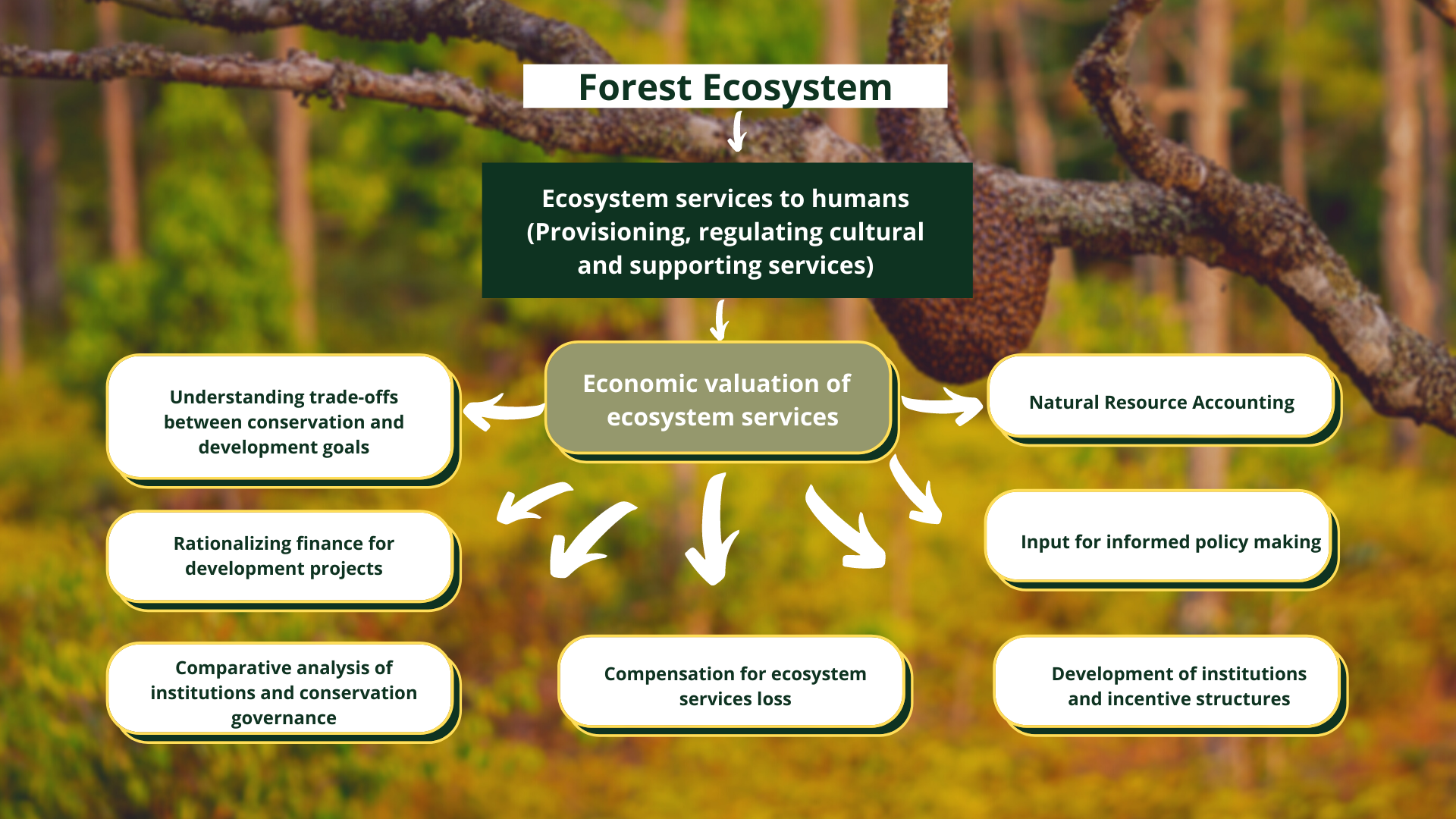To Factor Ecosystem Services into the Management of Forest Landscapes

Major Goals
1. Quantify ecosystem services and their flows at landscape scale
2. Assess economic values of ecosystem services
3. Incorporate ecosystem services and their values into management planning processes; and
4. Develop incentive mechanism(s) for managing landscapes to provide ecosystem services.
Determining the value of ecosystem services for management planning
Forest ecosystems provide essential services that impact a wide range of ecological, economic, social, and cultural processes. Simply put, an ecosystem is the physical environment or habitat where “a community or group of living organisms interact with each other.” But forest ecosystems are anything but simple and provide innumerable services that human beings depend on for existence, including the provision of air, food, and water. The forest ecosystems also play a role in the development of culture by providing the backdrop for cultural services, meeting ceremonial needs and the desire for recreation and spirituality.
Since forest ecosystems provide a multitude of services in their own inimitable ways, their value is infinite. Scientists and scholars have classified these services and developed methods for their valuation, data that makes important inputs for decision-making, like public policy, alternative development, and the analysis and impact assessments to measure effectiveness of interventions.
The program is employing a stepwise approach to support the identification and integration of ecosystem services into management planning. The first step is identifying ecosystem services within each landscape. These services include carbon, hydrological services, biodiversity, and additional critical ecosystem services. The baselines are then used to inform Working Plans, Management Plans, and other tools developed for improved forest management.
Forest-PLUS 2.0 is documenting this system as a proposed procedure to be used by the State Forest Departments (SFDs) and government line departments to incorporate the ecosystem services into Working Plans and landscape management plans. To support the uptake and use of this model, Forest-PLUS 2.0 works in close consultation with stakeholders while training and building the capacity for its implementation.
Highlights:
1. Beneficiary Identification and economic valuation of ecosystem services in the select landscapes in Bihar, Telangana, and Kerala.
2. Development of incentive-based mechanism for sustainable forest management.
3. Multi-level stakeholders’ consultation for field-based and mathematical modeling methods for the quantification and valuing of specific important ecosystem services and flows.
4. Use of values of ecosystem services in developing prescriptions for Working Plans and Landscape Management Plans.

